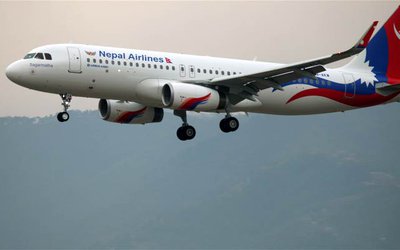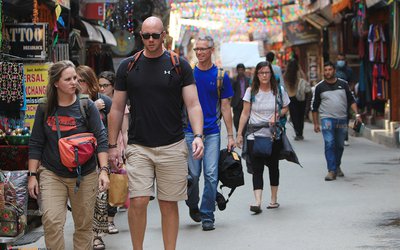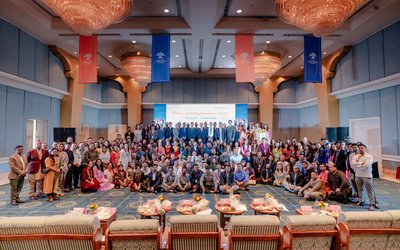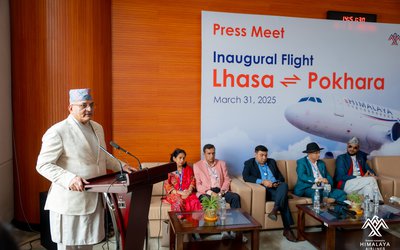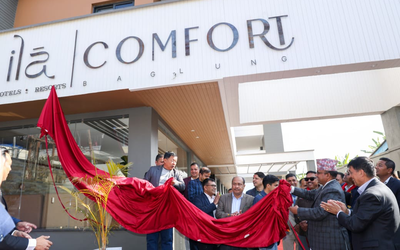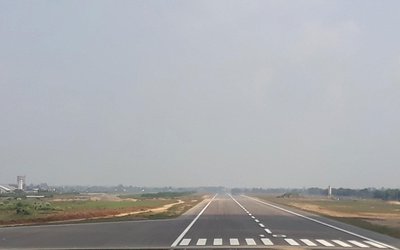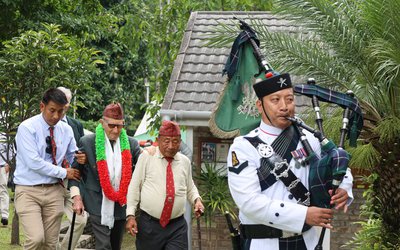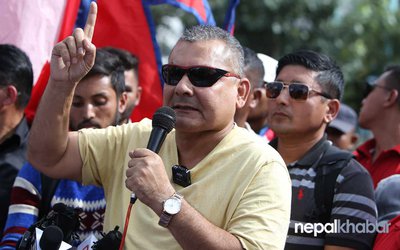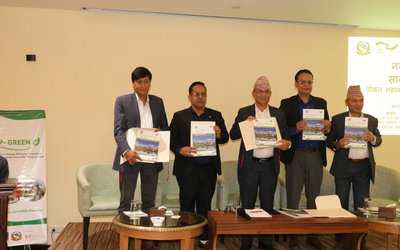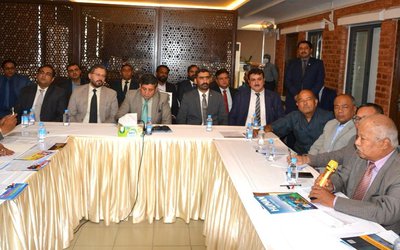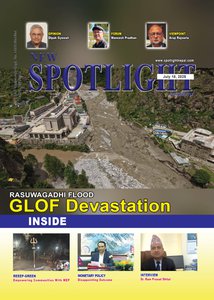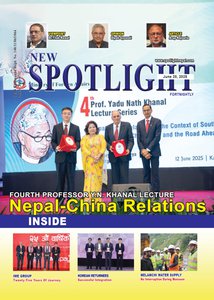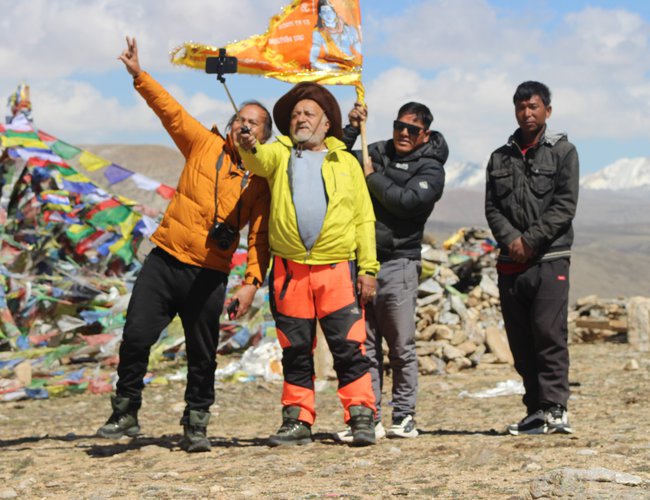
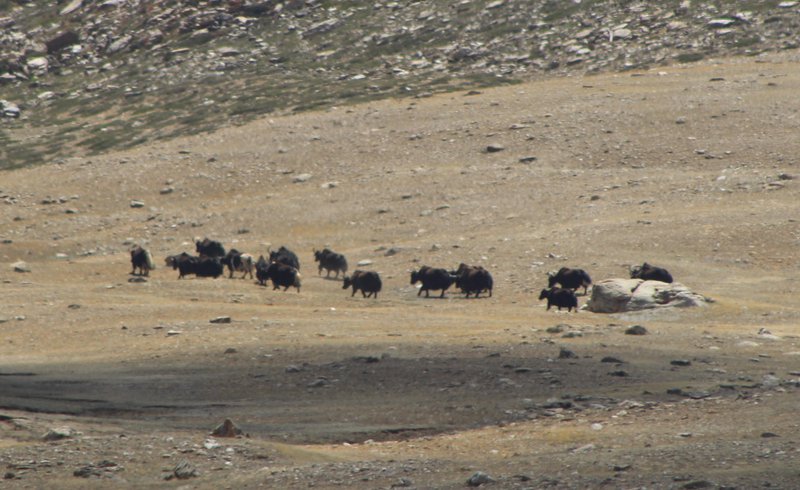
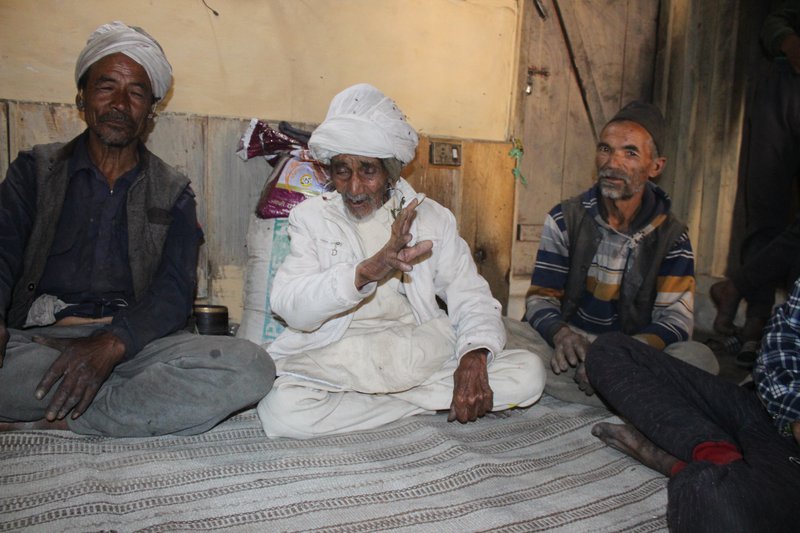
West mountain part of Nepal, especially Karnali and eastwards up to upper Gorkha lies adjacent to Tibet Ngari and Shigatse prefectures of autonomous region of China. The icon Mt. Kailash (the abode of Shiva) and Lake Mansarover is venerated by Hindus, Buddhists, Jains and Bons adherents. Tourists and pilgrims perform kora (circumambulation ritual journey to Kailash Mandala (Lama 2012). It was the land of caravan traders and semi-nomads’ barter economy but now it is land and air routes- Lhasa and Taklakot airports and motor roads with digital currency. It has been beyond imaginative changes. By air or by land route one can get Kailash Mansarover within an hour and so from the Nepalese borders- Hilsa and Lapcha pass. To Nepal Humla Karnali prefecture unfolds still the remote penultimate region of Nepal because of its last road transport connectivity under link with the capital of Nepal. However, few months are at await, i.e., the Kharpunath bridge over the Karnali river confluence with Chongkhola. Onward then, the Humli people are going to respire with easy connection their district with Kathmandu and adjacent trans-borders- Tibet. As in the ante the 1962 Sino-Indian frontier war, the socio- economic adverse changes in the trans-Himalayan closure of trade routes, the reopening of trans border routes and Karnali corridor motor road from the south will have favourable economic impact to Nepal, especially Karnali region. Road transport facility brings easy accessibility and closeness in the remote area. The ancient concept of Jadan (Tibetan Plateau) and Khasan (Sinja valley civilization) cultures of the Karnali are entering into globalization. The socio-economy of the Karnali province and religious cultural environment will then enter into new development paradigm. Tibetan changes are determinants to this regards.
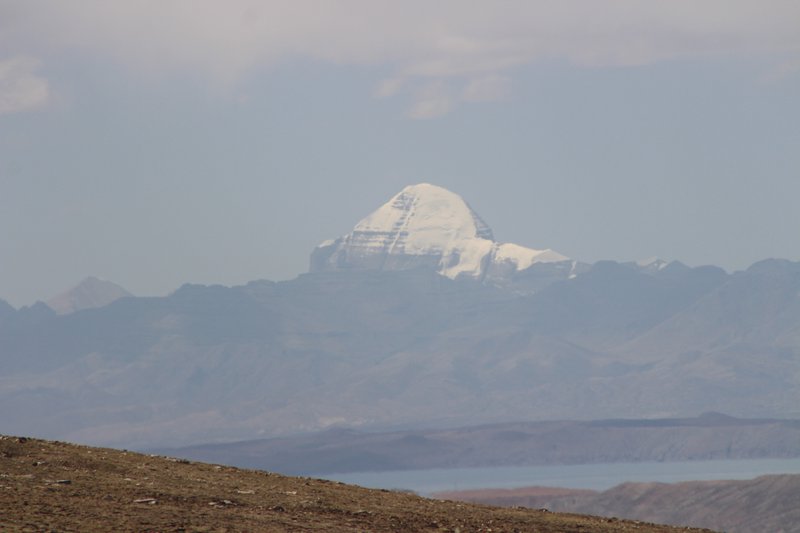
Among different dimensions of Nepalese development, tourism is one which can be a basic livelihood mode in Humla and generally in Karnali province. Progress in Mt. Kailash (6714m) and lake Manasarovar with Nepal’s nearest border Tibet China along its residues of the Jadan and Khasan cultures with them will transform into modernity. Exposing this insight out in global phenomena will help to create awareness that will significantly change the socio-economy of the area. According to Tshewan Lama (2012), a writer and former minister of Nepal, …the Mt. Kailash and Lake Manasarovar is the centre of the world and the spiritual cosmos…Axis of all religions. It has one mountain, two lakes, four rivers…. It is believed to be mounted on the vehicles of four great creatures: the horse to the east, the peacock to the south, the elephant to the west and the lion to the north…and four rivers are originated from their mouths (Khababas)of those creatures- Bramha Putra, Karnali, Sutlej and Indus respectively. Thus, Mt. Kailash and Manasarovar is the icon of tourism destination in the world. Nepal has to align and link with it to be mutually benefitted. The nature and the culture of Humla area is very rich for promoting tourism industry. The prevailed nature and culture and the perfect harmony between the both Shamanic communities (Jad and Khas) are two vital instruments for tourism promotion in the Karnali area. This article is about socio-economic and religious cultural potentiality of the region where by immersing myself in the Karnali region and Humli communities and ecology in search of Shangri-La in the Karnali tourism.
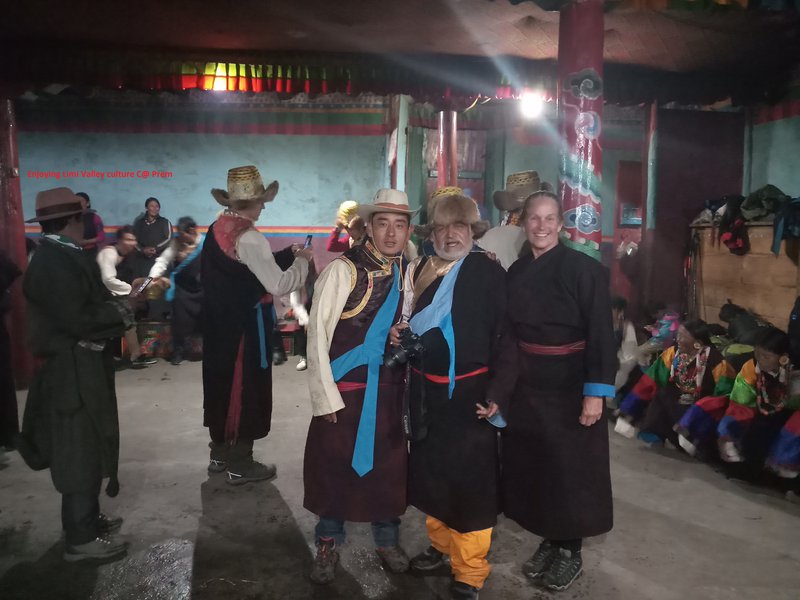
Humla district has two parts of tourism development i.e.; inside its own national areas Karnali prefecture with Jadan and Khasan identities and the high potential activities of neighbour Tibet- China. All religious faiths Hindu, Jain, Shikh, and Buddhist celebrate and worship lord Shiva and go to Temples such as four Naths and likewise all of them indiscriminately regard Mt. Kailashnath and go to Buddhist sites and shrines. Mt. Kailash symbolizes Shiva and Nath means Shiva, i.e., all sites of God- naths or Gompas are respected and regarded as same although sites and modes are different. However, Khasan culture, tradition and practices are more in superstitions, illusion and falsification. When and wherever Shamanic festivals take place, almost all shamans turn into wild Dhamis, Jhankris, Gurus and “claim that they can channel the gods of wisdom, yeshebi–tha through trance, but Buddhist Lamas disagree"(Lama 2012). The Jhankris, Pujari, Gurus hold and use more superstitions, and hypnotic falsification over the indigenous communities and backward people. There was/ is unique marriage systems- polygamy and polyandry prevailed in Khasan and Jadan reigns respectively. There were rigorous long meditation practices which is now hardly practiced. There are lot of justifications and arguments for and against of it. How far those logics and arguments are valued and valid things to be testified latter. To me those practices are being illogical these days. Thus, Karnali was/is in more illusion and superstition or in mythology than in reality or closer to modern science.
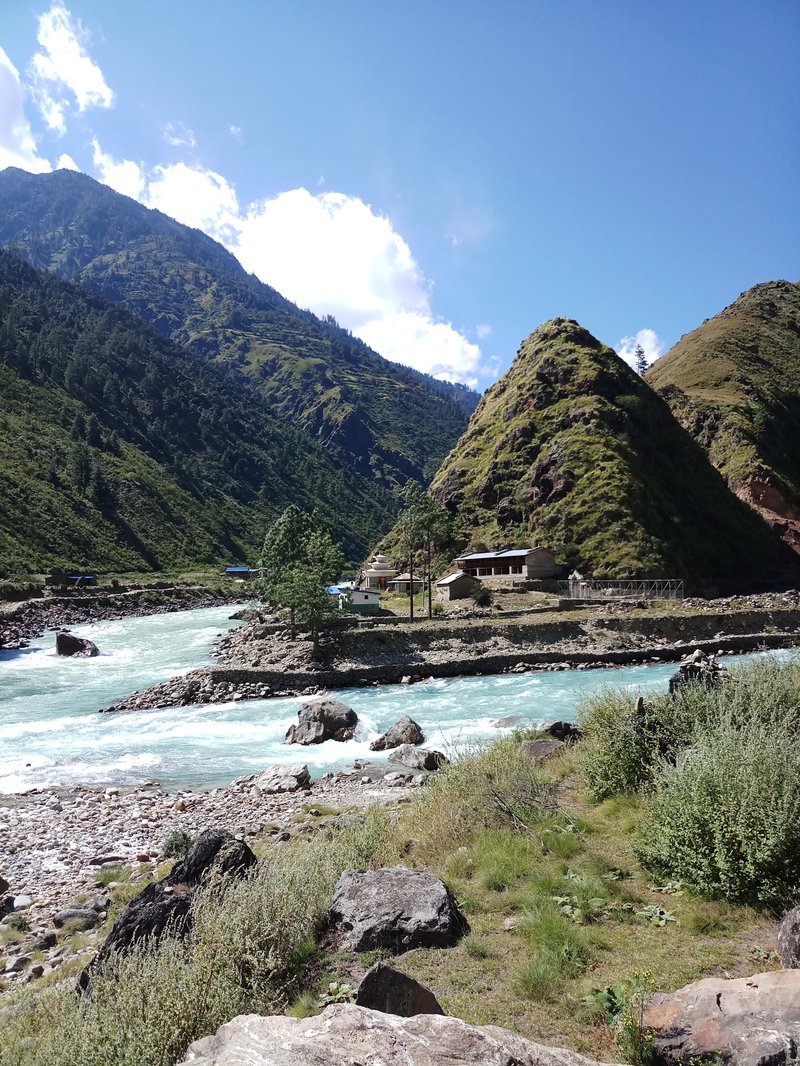
The term and turn has been obvious with formally opening Xigaze Zhongba to Korola pass Mustang (40 min. drive) and Mansarover to Hilsa and Lapcha pass (one-hour drive). Potentiality of tourism in Humla or Karnali region is simmering in good posture. The opening of Kailash Manasarover visits in Tibet China with two border passes- Hilsa and Syar (4900m) Lapcha from Nepal, and the construction of Karnali corridor highway- Jitegadh- Hilsa (3640m) bring substantial impact generally in the region and Humla, Mugu, Kalikot and Bajura districts in particular. Till date Indian pilgrim has to pay IC Rs 250 thousand a package deal to Kailash Manasarover. Likewise, NepaIi has to pay NC Rs 120 to150 thousand per person. If they use this land route Karnali corridor to Kailash this expenses will come down at least 50% less. Land route visitors will spend at least two days on the way to Kailash inside Nepal, i.e.; Surkhet to Hilsa. The local products of the Karnali will be marketed and consumed then the locales will be inspired from the good prices of their products. Internally the visitors/tourists will be allured to visit four Naths- Kharpunath, Khojarnath, Chhanyanath and Chandannath with Khasan culture taste and world famous Gompas of Limi valley Halzi and Jang, Yalbang, Tumkot and Railing Gompas on the way to the Kailash Manasarover pilgrimage tour with Jadan cultural taste.
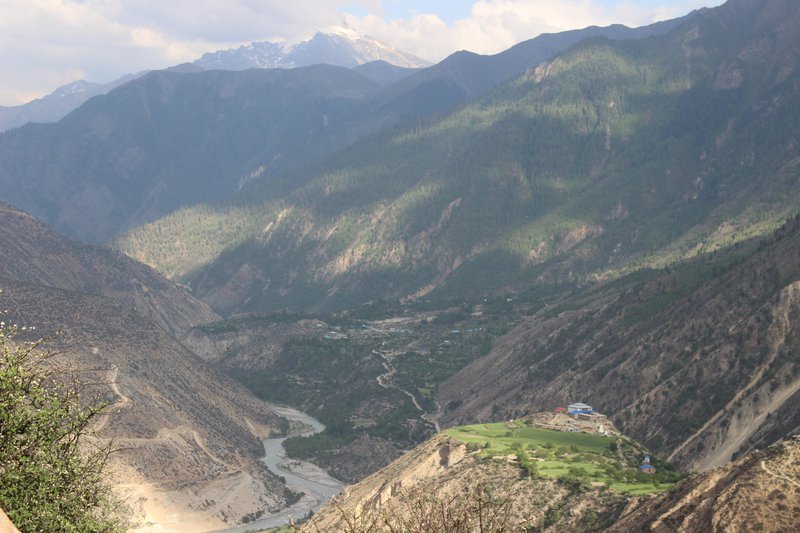
The tourists who like to go upper part Limi Lapcha(4900m) valley can see (enjoy) the Altitude Wildlife Park of Lapcha meadow full of herbs of wild horses, wild yaks, blue sheep, wolves and marmots (feus), and by chance snow leopard, Dhanfe and altitude ducks, etc. For the adventurous tourists, there are several itineraries and scopes to perform, for Mountaineers or peak climbers, such as Mt. Saipal, Kangun Himal, Changla Himal, Gorkha, Asajya tuppa, Apsi and Langtachen are there. They can trek a lot to Limi valley and Lapcha pass, Railing Gompa (3930m), base camp to Mt. Saipal Himal, treks to Khojarnath temple (inside Tibet border)and Mt. Kanjirowa,Rara lake, Mugu, etc. Besides that, there are lot of unexplored destinations and products inside Humla and neighbouring districts. They need to explore, collect, produce and expose in the market (public).
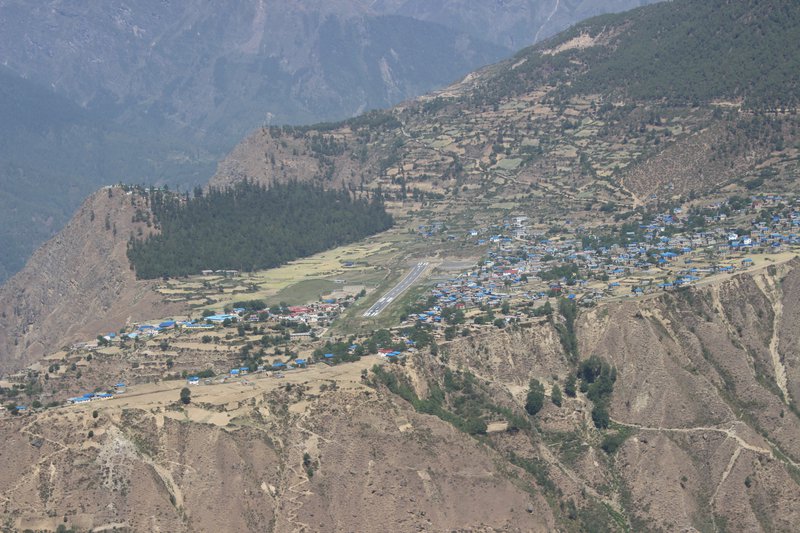
There is another part of eco- tourism promotion potentiality of Gompa system and cultural treasures of Humli people. Both Jadan and Khasan cultures deserve high value cultural potentiality in Karnali region. Polygamy, polyandrous culture, Dhami and Jhankris (Shamanism) communities of the society; the ancient type of unique meditation practices are really points to ponder. The district headquarters Simikot (2910m) and upper part or Humla unfold typical Tibetan culture which are about to vanish in Tibetan counterpart. Limi valley exposes the live or original ancient culture of Tibet. So many European and American (foreigners) or have done PhDs and usually visit this place. The meditation practices used caves and Gompas are still there, e.g. Manepane cave, Chan-Se Namka Dzong cave and Halji cave. The ancient healing practices of Shamans and Dhamis, Jhaknkris are still in practice. The semi-nomadic practice, i.e., Khark system is equally romantic one which supplements the economy of the people. Humla district headquarter, Simikot has been connected to Tibet by two motorable roads- i) Hepka- Ghattekhola- Kermi- Muchu- Yari- Hilsa which is typically suitable for trade route with Puran Country of Ngari prefecture of TAR (Tibetan Autonomous Region) and ii) Hepka-Sheliman- Nyalupass (4995m)-Talung (Jade)- Lapcha pass as Kailash Darshan Marga or tourism route to Kailash Manasarover.
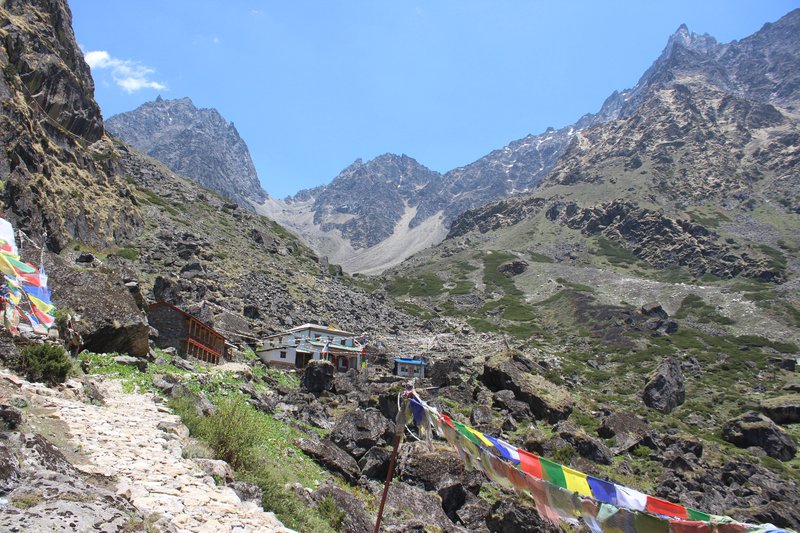
For the prosperity and wellbeing of Humla and Humli people, GoN has to do few tips for the promotion of tourism in the siren Shangri-La land. Bring back and run the traditional trans-border trade as before caravan trade culture transit into modernity with Puran Country of Ngari prefecture of China at G to G level understanding. It will help to operate two transit routes- Hilsa and Lapcha of Nepal for the promotion of trade and tourism. Namkha municipality is imperative to build physical infrastructures- quarantine, security check post ,dryport, immigration, and tax offices in both border transit routes. Likewise, a view pad or tower with modern devices (binoculars) facility is imperative at Lapcha pass for viewing Mt. Kailash and lake Manasarover in Tibet and watching Altitude Wild Lives Park in the Syar Lapcha (meadow). Syar Lapcha is the balcony, watching Kailash Manasarovar where from pilgrims perform worship to Kailash Mandala. Keeping the impact of global warming, abide the SDGs for nature conservation and sustainable eco- tourism development. Educate and increase level of awareness to locales for conservation, promotion and optimum use of local resources. i.e.; impart the knowledge and skills to locale about the values or importance of natural and cultural heritages. It is necessary to upgrade and improve the tracks opened motorable roads facilities inside the Karnali region and Humla. These efforts will help to transform backward Humla and Karnali towards prosperity and modernity. The dream of prosperity and happiness of Nepal will come into truth.
References: Lama, T. Kailash Mandala (2012, 2nd Ed.). Kathmandu: Tshewang Lama.
Sharma, P. “The Inclusive Democracy”, unpublished article 2006.
_______. 2005. “Village Tourism for the Sustainability of Rural Development” Prospect of village tourism in Nepal. Kathmandu: Village Tourism Promotion Forum- Nepal.
Hagen, T. (1961). Nepal: The kingdom in the Himalayas. Berne, Switzerland: Kummerly and Frey.
Khadka, R. (2056 BS). Karnali. Kathmandu: Media Service Nepal.
Kunwar, R. R. (1997). Tourism and development. Kathmandu: Laxmi Kunwar.
An interview with Khadak Shahi and Chandr Bahadur Shahi (MP) of Mugu. 13-14 July 2006.
- A Day at the Hunting Mine
- Jul 25, 2025
- New ruler: Ruler Failed to Figureout the Ecology of Nepal
- Jul 19, 2025
- A Two-Day Trek: Jumla-Rara
- Mar 28, 2025
- Rafting In The Karnali River
- Aug 31, 2024
- Religious Cultural Potentiality of Tourism in Humla
- Aug 18, 2024

